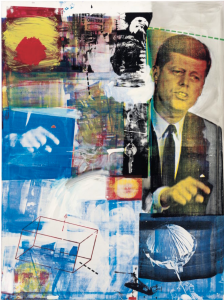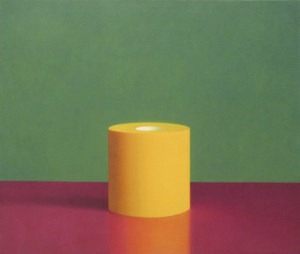There can be no mistaking that we are living through an historically significant moment. A global event of this magnitude—the Coronavirus pandemic and all of its economic, social, cultural, environmental, and political repercussions—is like nothing the world has known for over 70 years. While previous pandemics and world wars have certainly had devastating and far-reaching consequences, none have effected virtually every aspect of daily life and reached into every community world-wide in such a direct way.
Like it or not, we are in the unique position of being first-hand witnesses to this major occurence and its many corollary events.
Your challenge this week is to make a drawing in any media—color and collage included, as well as the drawing tools we have been using–that embodies any aspect of this moment, and particularly your feelings about this moment, captured in an image.
The best way to do this, ironically enough, is not to try–any artwork that is open and true to its time, as well as its maker, will automatically function as a time capsule. The key is to allow yourself to become aware of the things, both large and small, that have touched you the most over the past month or more and find a way to express them visually.
Avoid the temptation to illustrate your idea–keeping it at a distance–but rather feel and act upon your impressions and ideas in visual form.
It’s not likely that Edward Hopper (1882-1967), for instance, in his painting Nighthawks, from 1942, set out to create an iconic image of urban loneliness and alienation in 20th century American life. Curiously, it was painted not long after Pearl Harbor, but you’d never know it looking at a near deserted diner after hours. Rather than taking on current events he focused instead on the sense of foreboding he felt in public places late at night, but it’s tempting to guess this sense of foreboding is a displaced feeling about much larger perils; a topic he wasn’t ready to tackle head on. Not unlike film noir, which followed the war, Hopper is already imagining the dark side of a culture uprooted by major events.
This Robert Rauschenberg (1925-2008) painting, Buffalo II, from the 60’s, has become similarly iconic in capturing the turmoil of public events during that decade. With the rise of television and mass media, people were becoming inundated by a tidal wave of images like never before, one in which it could be hard to locate and hold onto one’s sense of truth (the first wave of our present condition). They say that at the first televised presidential debate, between John F. Kennedy and Richard M. Nixon, that those watching on TV were certain that Kennedy had won the debate, while those listening on radio felt the opposite. Like Marshall McLuhan’s contemporary best-seller, The Medium is the Message, the power of images and sound bites was supplanting the power of words.
Most importantly, Rauschenberg would not have started with that kind of thesis and then illustrated it; he was simply alert to his time, almost like a nerve ending, and manifesting his impressions of the world around him without overt commentary (and having a great time doing it; this painting exudes the joy of its making). It was for art professors like myself, over 50 years later, to “dig up” the painting as an example of human consciousness in the 1960’s.
Also remember that many times a whisper can be louder than a shout. Renowned filmmaker Alfred Hitchcock (1899-1980) once said that if he made a movie about the Titanic he wouldn’t show the ship going down, but just three crew members, below deck, playing cards–until the viewer became aware that the level of the liquid in their glasses was slowly tipping at a steeper and steeper angle.
This painting by Los Angeles artist Martha Alf (1930-2019) was painted long before toilet paper hoarding became one symbol of our current crisis, but historians and others talk about a concept called reverse causality–how a contemporary viewer can never look at a roll of toilet paper again in quite the same way, especially one whose amplified colors seem to elevate it into something more precious than gold.
Your goal then, for this week, is to look at the images and events swirling around you, become aware of what resonates with you the most, and record it in such a way that you or another viewer, 30 years hence (or longer), can look at it and get a palpable sense of this time; our time.
Your Choice of Media
Your media for this drawing is wide open, as long as it’s a work on paper (of any size). You can use the conventional drawing tools we have been using but you’re welcome to add color drawing media (colored pencils, pastels, watercolor) and collage.


